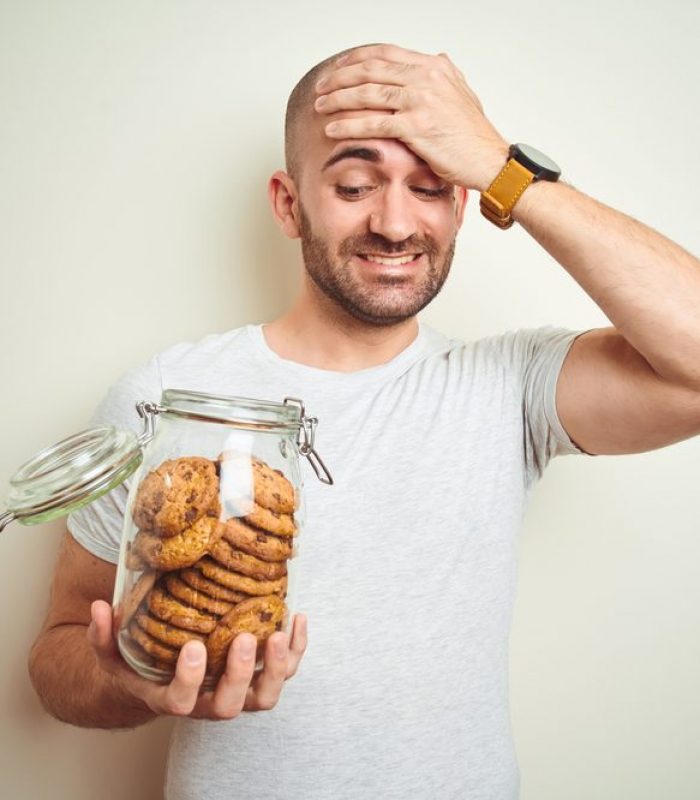The liver converts THC into 11 hydroxy THC and that can have 300x more punch than just smoking cannabis. It’s basically your body making its own high potency drug.
For many recreational users, the purpose of using cannabis is to feel the psychoactive effects of THC. Smoking cannabis causes the THC to be absorbed through the lungs and routed directly to the brain, where the psychoactive effects occur. It’s a quick process that begins shortly after inhalation. But, when THC enters the body via ingestion, it doesn’t take that direct flight to the brain — and interesting things happen during the stopovers. It becomes something very special: 11 hydroxy THC.
11 Hydroxy THC in the Brain
When the consumer smokes cannabis, what hits the brain is mostly good ol’ fashioned regular THC — the stuff in the cannabis plant. But that’s not what happens when we eat edibles.
The THC that interacts with the brain from edibles isn’t the same kind that comes via a joint or bong rip. It’s 11-hydroxy THC, a different kind of cannabinoid — one that does not occur in the cannabis plant.
11-hydroxy THC is formed within the human body after regular THC ingestion. When certain enzymes in the body encounter the regular THC molecule, they metabolize into 11-hydroxy THC. When the consumer smokes THC, relatively little metabolization occurs. There simply aren’t many enzymes between the lungs and the brain to do the work. In fact, only about 5 percent of the THC that hits the brain from smoking is 11 hydroxy THC.
11 Hydroxy THC in the Gut
But when you chow down on a cannabis gummy bear or magic brownie, the GI tract gets a shot at the THC — and it has many more enzymes that can do the hard work of metabolization. After moving through the gut, the THC (now partially the 11-hydroxy variety) is routed through another stopover. This time it’s in the enzyme-heavy liver, where the body has another chance to break the remaining regular stuff down into the 11-hydroxy variant.
As anyone who’s tried both can tell you, the psychoactive effects of edible do not come quickly. That’s because the THC has to hang around your midsection for two stops before it can reach its final destination in your cranium. The wait after ingesting can be anywhere from 30 minutes to two hours.
After all that, the amount of 11-hydroxy THC is anywhere from 25 to 300 percent of the original amount of THC. If those numbers sound impossible, you’re not alone. In a bizarre quirk of nature, the conversion of THC to 11-hydroxy THC isn’t a one-to-one equation. Sometimes, the body takes one unit of THC and makes more units of 11-hydroxy from it. How? No one is sure exactly.
Research into 11-hydroxy THC is limited, and is languishing in important-but-boring areas where the data is available (like how much remains in the body after death, how long the compound shows up in human hair, etc.) thanks to U.S. laws that make researching cannabis far too difficult.
Animal Tests
But that doesn’t mean they aren’t underway. Directly after the discovery, scientists began to probe molecules of THC to understand how they differed from regular THC. While initial tests on animals were inconclusive, later human tests revealed that eleven hydroxy THC is indeed a more potent chemical than its plant-based cousin.
In fact, it’s two or three times more powerful in terms of psychoactive effects. And that’s just in terms of potency. It also lasts much longer. Instead of two- or three-hour high, metabolized THC can stay in its effective range anywhere from six to eight hours.
Why To Use Caution With Edibles
That’s insane — though maybe not surprising. Every cannabis consumer has a story of someone who tried an edible, decided it wasn’t working, and took more. These people often have a thoroughly forceful experience. Well, this is why: your body is making its own drug — one that doesn’t occur in nature and packs a mighty wallop of psychoactive potential.
But where recreational users may see a “Use Caution” sign, patients whose treatment includes medicinal cannabis often prefer edibles for the same reason — it’s more potent and longer lasting. Instead of taking two Advil every four hours, it’s easier to take one Aleve. That’s the same idea behind edible-based cannabis therapy. Dose once and you can forget about your symptoms for a solid chunk of the day.
The Bottom Line With With THC
The bottom line is that researchers have increasing interest in 11-hydroxy THC. They want to know how to create, how it affects us, and how to synthesize it. Mostly, they want to know why it’s useful for the body to produce in the first place. It’s another step in unlocking the link between the endocannabinoid system and human health, which promises to change medical history.






Valerie Warren
Very interesting read